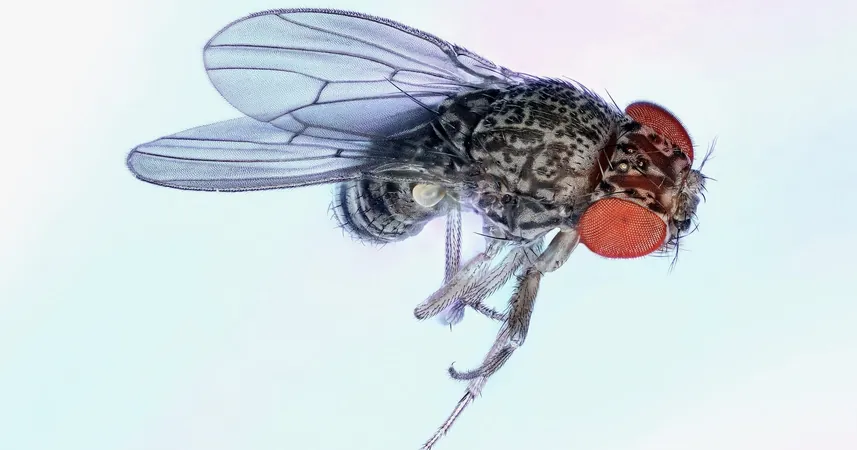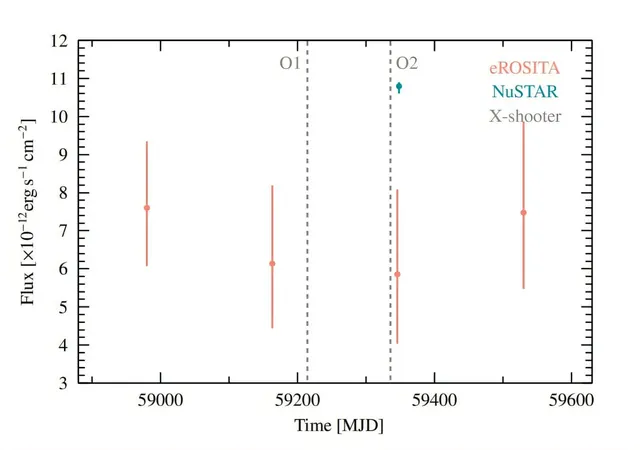
Unlocking the Secrets of the Fruit Fly Brain: A Scientific Breakthrough
2024-11-14
Author: Mei
Groundbreaking Research Overview
Groundbreaking research has unveiled the astonishing intricacies of the fruit fly brain (Drosophila melanogaster), pushing the boundaries of our understanding in neuroscience. A series of pivotal studies published in the prestigious journal *Nature* highlight the completion of an extensive wiring diagram of the fruit fly brain, known as the connectome, which encompasses a remarkable 140,000 neurons and over 50 million synaptic connections. To put this into perspective, the fruit fly's brain is smaller than a poppy seed, yet its complexities far surpass those of other model organisms, such as the roundworm C. elegans, which contains only 302 neurons.
The project was primarily spearheaded by the FlyWire consortium, and its completion is set to revolutionize our approach to brain mapping and function assessment, a feat previously thought impossible for larger brains containing hundreds of thousands or even billions of neurons, such as those found in humans. This research may pave the way to answer fundamental questions about brain functionality, not just in insects but across various species, including mammals.
Neuron Diversity Uncovered
One of the key findings from this research is the identification of at least 8,453 unique types of neurons, significantly more than the 118 cell types found in C. elegans. This diversity in neuronal types is organized into various classes based on their functions, including sensory neurons that convey information from the environment to the brain and motor neurons that transmit signals from the brain to muscles. This profound diversity hints at the sophisticated behavior fruit flies exhibit, including complex flight maneuvers, navigation, and mating rituals involving pheromones.
Interestingly, previous hypotheses suggested that neurons might be unique like 'snowflakes,' implying a high degree of randomness in their connections. However, the research indicates that while there are random variations in some connections, the overall structural organization of neurons tends to be consistent. The strength of neuronal connections appears to be predominantly stereotyped, challenging earlier assumptions and suggesting a more structured basis for brain organization.
Revealing Complexity Through Connectivity
Fruit fly behavior showcases remarkable complexity, and their brain reflects this through its intricate wiring. On average, each neuron connects via 12.6 synapses, with some neurons boasting over 1,000 connections. This uneven distribution of connections suggests specialized roles within various networks in the brain, which has been explored through mapping distinct areas responsible for sensory processing, such as visual and olfactory tasks. One analysis revealed a staggering 78 anatomically distinct subnetworks, emphasizing the high degree of specialization within the brain.
Moreover, the fruit fly brain has been classified as a 'small-world network,' characterized by tightly clustered nodes and short communication paths. This structural model, also seen in power grids and social networks, enhances signaling efficiency and connectivity among neurons, facilitating rapid information transfer and coordinated responses.
Implications and Future Research Directions
The complexity revealed in fruit flies raises essential questions about the evolutionary and functional significance of such structures across species. The distinctive design principles observed—such as optimization, efficiency, and coherence—suggest sophisticated engineering behind the neural architecture that may hold clues to broader biological principles.
Although researchers have made significant strides, many connections, particularly electrical ones, remain uncharted. The ongoing exploration of the fly brain presents exciting opportunities to expand our knowledge, potentially offering insights applicable to human neuroscience and other fields. The fruit fly, often dismissed as a simple organism, is proving to be a cornerstone in unraveling the enigma of brain functionality, showcasing nature's remarkable ingenuity.
Stay tuned as this captivating journey into the brain of the fruit fly continues, possibly transforming how we perceive the neural underpinnings of behavior across all living creatures!



 Brasil (PT)
Brasil (PT)
 Canada (EN)
Canada (EN)
 Chile (ES)
Chile (ES)
 España (ES)
España (ES)
 France (FR)
France (FR)
 Hong Kong (EN)
Hong Kong (EN)
 Italia (IT)
Italia (IT)
 日本 (JA)
日本 (JA)
 Magyarország (HU)
Magyarország (HU)
 Norge (NO)
Norge (NO)
 Polska (PL)
Polska (PL)
 Schweiz (DE)
Schweiz (DE)
 Singapore (EN)
Singapore (EN)
 Sverige (SV)
Sverige (SV)
 Suomi (FI)
Suomi (FI)
 Türkiye (TR)
Türkiye (TR)